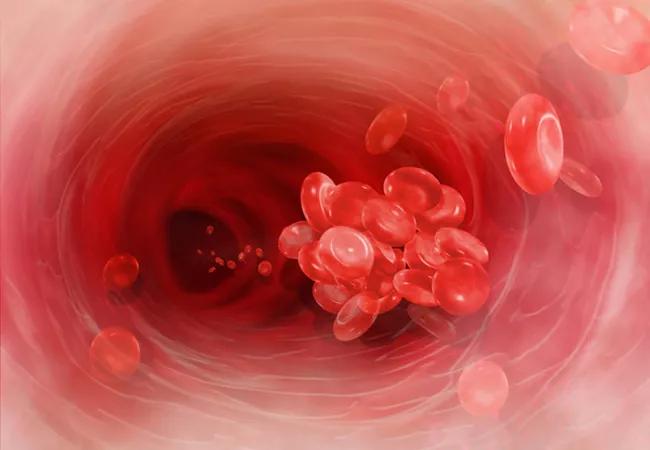Details released from the trial halted due to excessive thromboembolic events

Use of apixaban for stroke prevention in patients with an On-X mechanical aortic valve leads to a significantly higher rate of valve thrombosis and valve-related thromboembolic events compared with use of warfarin. This finding from PROACT Xa — a multicenter prospective randomized trial evaluating the safety and efficacy of the factor Xa inhibitor in this setting — prompted early termination of the trial in September 2022. Study results were presented in May 2023 at the annual meeting of the American Association for Thoracic Surgery, and a final report was published in New England Journal of Medicine Evidence.
Advertisement
Cleveland Clinic is a non-profit academic medical center. Advertising on our site helps support our mission. We do not endorse non-Cleveland Clinic products or services. Policy
“We had good reason to believe that apixaban could be a suitable alternative to warfarin for patients with an On-X mechanical aortic valve, offering a simpler method of stroke prevention,” says Lars Svensson, MD, PhD, co-chair of the PROACT Xa steering committee and Chair of Cleveland Clinic’s Miller Family Heart, Vascular & Thoracic Institute. “Unfortunately, the data did not support this.”
For patients with a mechanical aortic valve, warfarin is the only approved drug for anticoagulation. Faced with numerous challenges inherent in its use — including multiple food and drug interactions and the need for frequent blood monitoring — many patients, especially younger ones, opt for a biological valve instead. Unfortunately, such valves are less durable than mechanical valves, which can lead to more frequent need for reoperation in younger patients.
Although previous trials found that the direct thrombin inhibitor dabigatran failed to prevent thromboembolic events with mechanical valves, experts hoped that pairing an alternative anticoagulant with the newer On-X mechanical aortic valve might result in safer thromboprophylaxis. The On-X valve’s bileaflet design is believed to make it less prone to thrombosis, allowing for a lower intensity of anticoagulation than for other mechanical heart valves. In addition, apixaban offers better bioavailability and a more favorable bleeding profile than dabigatran.
For patients with an On-X mechanical aortic valve, the PROACT Xa trial was designed to determine (1) if apixaban is noninferior to warfarin in preventing valve thrombosis or valve-related thromboembolism and (2) whether apixaban provides acceptable anticoagulation based on FDA criteria.
Advertisement
The study planned to enroll 1,000 participants at 64 U.S. sites but was stopped after enrollment of 863 patients (median age of 56 years, 24% female).
All patients had undergone implantation of an On-X mechanical aortic valve at least three months before enrollment and had been maintained on warfarin. Upon enrollment, they underwent 1:1 randomization to apixaban 5 mg twice daily or warfarin with a target INR of 2.0 to 3.0. Participants in both groups also took aspirin 81 mg daily unless they had a documented contraindication. The trial was open-label with blinded endpoint adjudication.
Although clinical guidelines allow for a lower target INR for warfarin for patients with an On-X valve (1.5 to 2.0), the trial used the standard range of 2.0 to 3.0 to ensure a well-accepted standard of care for the control group.
Outcomes were assessed among participants enrolled from initiation of the trial in May 2020 to the date it was halted in September 2022. The primary efficacy endpoint was the combined number of valve thrombosis and valve-related thromboembolic events. Results were as follows:
The difference in event rates exceeded the predetermined margin for noninferiority of apixaban (< 1.75%/patient-year). In addition, the performance success criterion for apixaban (event rate < 3.4%/patient-year) was not met. Of note, 14 thromboembolic strokes occurred in the apixaban group compared with none in the warfarin group.
Advertisement
Major bleeding outcomes were as follows:
The difference between groups did not meet statistical significance. However, both groups exceeded the predetermined safety threshold; in the warfarin group, this may have been attributable in part to the higher INR range used.
Dr. Svensson concludes that the PROACT Xa study provides strong evidence that factor Xa inhibition is inadequate to prevent valve thrombosis and thromboembolism in patients with an On-X mechanical aortic valve. But he reiterates that the challenge remains the lifelong need for warfarin after implantation of a mechanical valve, which leads many younger patients to choose a less-durable valve option. He notes, however, that the rate of stroke in the warfarin arm was lower than expected, at 1.3% per patient-year, which further supports the safety of the valve with use of warfarin.
“We need to keep searching for warfarin alternatives,” he emphasizes. “More studies should be conducted with newer mechanical heart valves as they are developed and different anticoagulants or combinations of anticoagulants as they emerge.”
Advertisement
Advertisement

Experience-based takes on valve-sparing root replacement from two expert surgeons

New review distills insights and best practices from a high-volume center

Recent Cleveland Clinic experience reveals hundreds of cases with anatomic constraints to FEVAR

30-year study of Cleveland Clinic experience shows clear improvement from year 2000 onward

A scannable graphic recap of our latest data

Surgeons credit good outcomes to experience with complex cases and team approach

For many patients, repair is feasible, durable and preferred over replacement

In experienced hands, up to 95% of patients can be free of reoperation at 15 years